Cuba: A Chess Wonderland
There has been an U.S. economic embargo against Cuba since 1961. This means there are no formal trade relations between the two countries. However, Coca-Cola, M&Ms and TV programs such as “Friends” are seen there… perhaps through a maze of third-party relationships. Fortunately, art forms like chess are not bound by such restrictions.
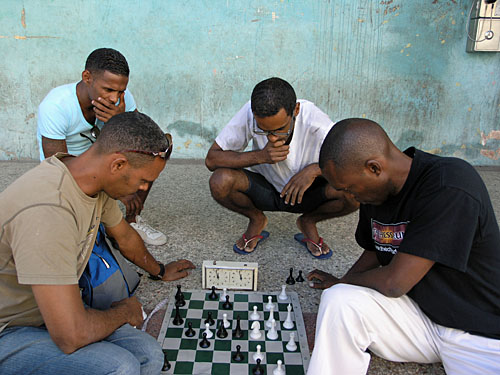

Chess games were easy to find in Cuba.
There are 12 stipulations that allow U.S. citizens to travel to the island for specific commercial, educational and journalistic purposes. It is clearly stated on the Department of State website here.
General licenses are granted to the following categories of travelers, who are permitted to spend money to travel to Cuba and to engage in other transactions directly incident to the purpose of their travel, without the need to obtain a specific license from the U.S. Department of the Treasury’s Office of Foreign Assets Control (OFAC).
Of course, the country has a number of treasured commodities that people attempt to import illegally such as rum and cigars. One would risk fines and public humiliation of having expensive Cohiba cigars torn up one by one or expensive white Hennessy poured out like water in airport customs.
Since I had no economic interests in Cuba, it was not a temptation I had to deal with. Be that as it may, the country has many other historic points to admire besides its famous rum and cigars. There were also American cars there, but most were from 1950s vintage… mostly pre-1961.
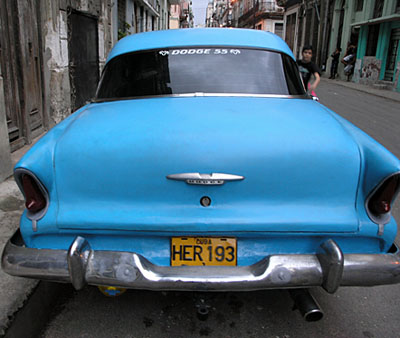

It is amazing that the majority of the cars on the road are antiques and car parts are made from scraps! Cubans are very resourceful and focused. I had a chance to visit the beautiful University of Havana where this discipline was on full display. No cell phone addiction… yet. The only blip was the cigarette smoking amongst the students.
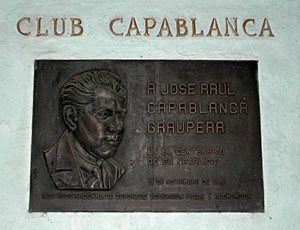

Club Capablanca is located on Infanta and Humboldt Street near 23rd. Photo by Daaim Shabazz.
The country has a rich chess culture for more reasons than having produced a World Champion in Jose Raul Capablanca. I visited the island of 11 million to better understand the economics, social dynamics, and culture of the country. Cuba is a nation with a rich and storied history. Its chess history is not as eventful, but everpresent on the island. There is a compulsory chess program in the schools. Chess is fully entrenched in the culture as the Capablanca Chess Club on Infanta and Humboldt Street is bustling with activity during the afternoon. Thick smoke billows amidst the clicking sounds of chess clocks.
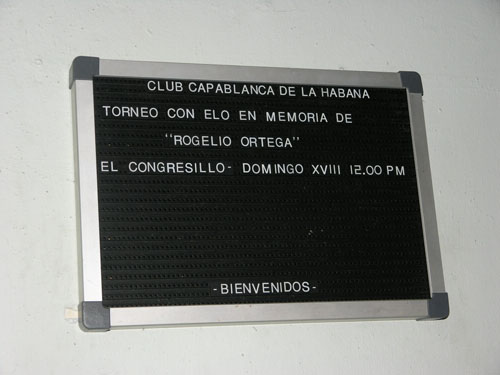

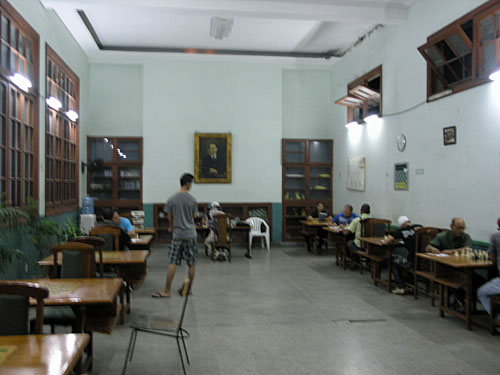

The 2011 Rogelio Ortega Memorial was in progress!
During my visit, I was pleasantly surprised to find that a tournament was being conducted. What was even more of a surprise was the fact that it was a memorial tournament for former Cuban Champion, Rogelio Ortega. Ortega has been featured on The Chess Drum and is in the annals of history given his Afro-Cuban roots.
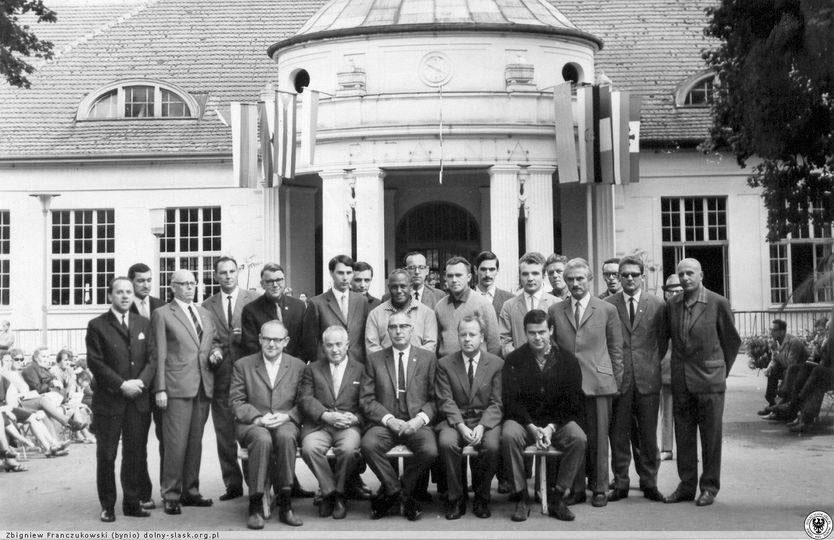

Polanica-Zdroj, 1967. Seated (L-R): Furman, Flohr, Euwe, Uhlmann, Hort. Standing (L-R): Arlamowski, S. Witkowski, Graetz, Horbacki, Orbaan, J. Schmidt, J. Adamski, R. Ortega, Kalarow, Filipowicz, Suttles, Liebert, Sliwa, Kuszewski, Kozlowski, Kostro, Turski.
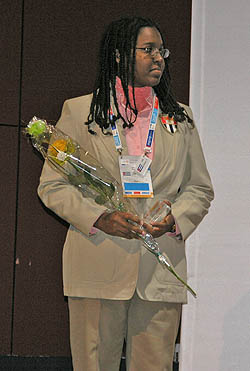

I did not meet WIM Oleiny Linares-Napoles in Cuba,
but we have a common friend. Photo by Daaim Shabazz.
Chess was not only played in the club but on the streets. Chess imagery was also seen on street murals and sculptures. There were also famous photos in the Habana Libre Hotel of Bobby Fischer playing Fidel Castro by the 1966 Olympiad and Che Guevara playing in a simultaneous exhibition.
I met a security guard at the Hotel Colina and it turns out he was a chess player. He took me to Muraleandro to view the art district there. On the way, we saw street players playing blitz. I played two games and split them. The players were fair players, but apparently unschooled in openings.
I visited the club several times and on the first day met a player named Vladimir Ferrer who told me he was from Santiago and came to Havana to have a better shot at improving his economic lot. Some time later, I mentioned Olympiad medallist WGM Oleiny Linares-Napoles and he stated that she was a friend and also hailed from Santiago. I was told that there was a chess program on television.
One afternoon, I happened to find a recap of a 1974 Olympiad game done by a female commentator. Refreshing! In the coming weeks, I will share more of these stories about this fascinating chess nation.
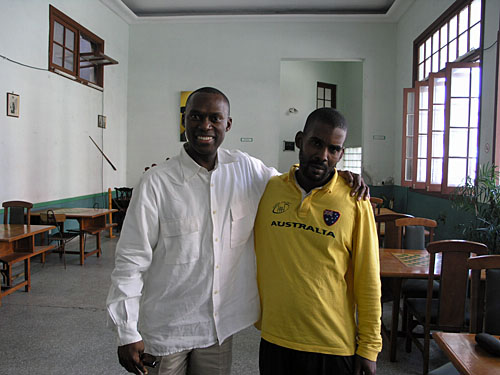

At the Club Capablanca with Vladimir who hails from Santiago. Vladimir taught himself English and was comfortably fluent. We played a series of competitive and theoretical games. The games were level, but he was ultimately a few games up. Strong! Photo by Daaim Shabazz.


Having witnessed the enthusiasm, it is easy to see why Cuba is one of the strongest nations for its size. They are currently ranked #17 in the world. Photo by Daaim Shabazz.

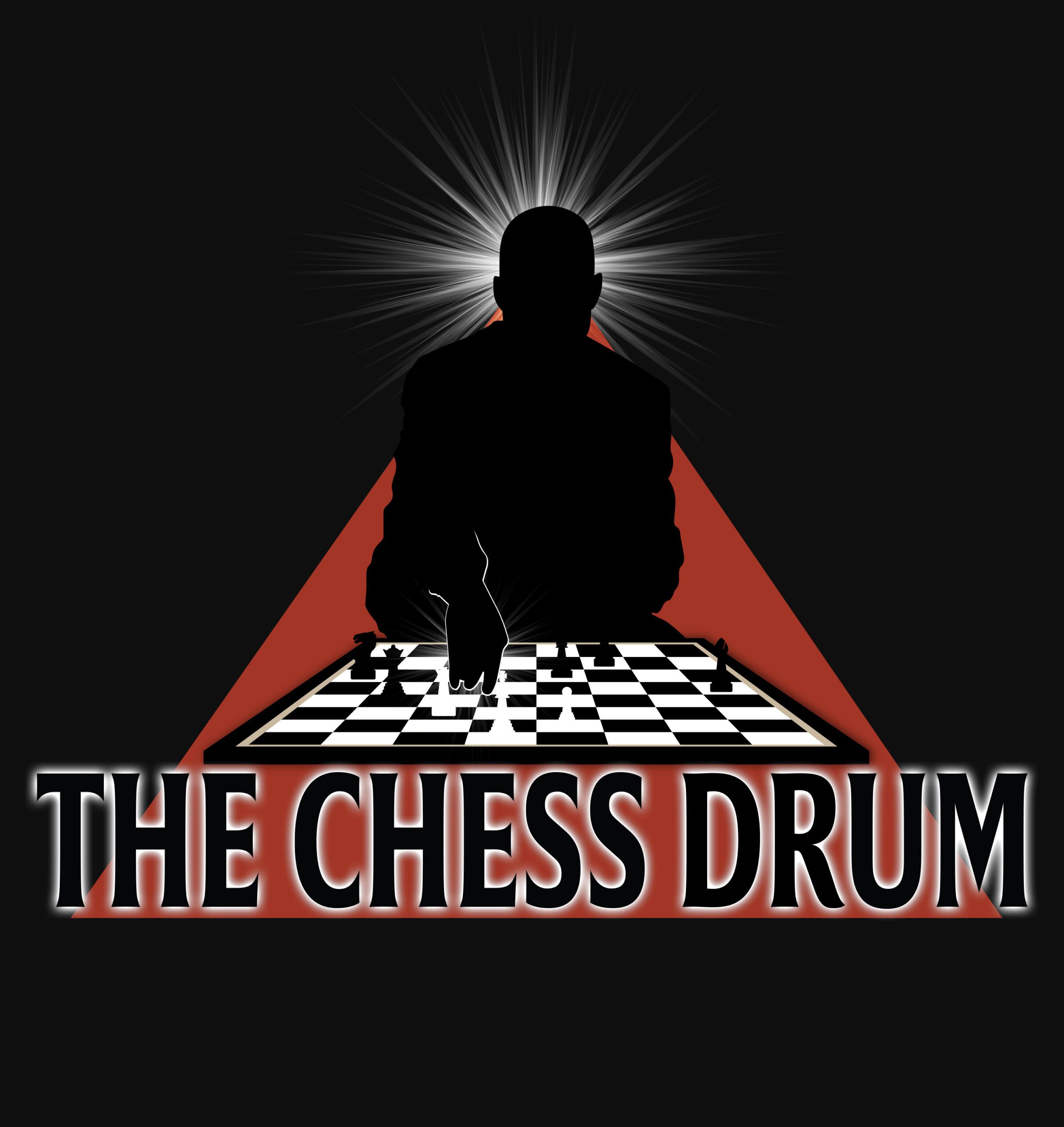
Ah, a refreshing experience all chess players should have. In my opinion, the chess players of the world are more “united” than the nations that are part of the United Nations. Thanks for posting this very interesting article.
I plan to visit Cuba this summer and your articile was very informative. I wasn’t aware that Chess was so popular in Cuba. I’ll have to tell Kassa about that. Maybe, I can get him to go with me. He’s home for the summer after completing his first year at Duke and doesn’t want to do or go anywhere unless it’s Chess related. He is in his element this week at the Chicago Open!